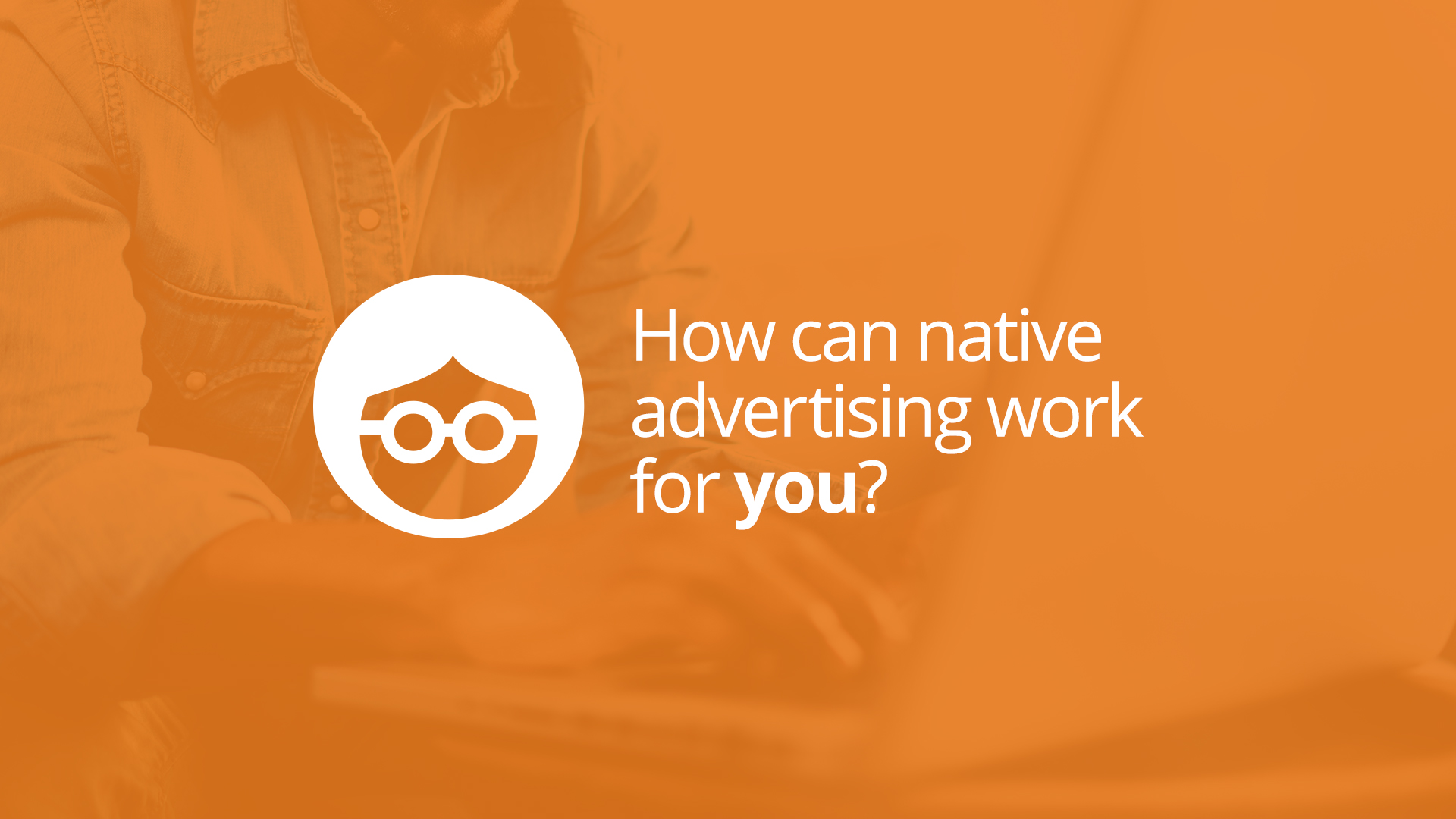How to Get Started with B2B Native Advertising?

For B2B marketers, native advertising can be a powerful tool for reaching potential customers.
25% more people look at native ads than banner ads, with an 18% lift in intent to buy. Not only that, but the average consumer has 2x more brand recall with native ads than banner ads, and spend 308x more time on the ad.
Creating an effective native ad is more complicated than making a banner ad, though. You have to make good content, ensure that it fits seamlessly into its environment, and target the right people.
Read on for how B2B marketers can make native advertising work for them.
What Is Native Advertising?
First, the basics. Native advertising is advertising that looks like the editorial content around it. It differs from content marketing in that content marketing can often be unpaid marketing: it could appear on a brand’s website or blog, Twitter feed, LinkedIn, Facebook page, or be sent to their newsletter list.
Native advertising is always paid and designed to look like its “native” environment.
The main types of native advertising are:
- Paid social. Facebook, Twitter, and LinkedIn ads that look like the posts around them, but have been purchased by a brand to be promoted by the platform to the brand’s desired viewers. LinkedIn is particularly effective for a B2B lead generation, so it’s a great place to start.
- Paid search. Google and Bing search result ads are a kind of native advertising. They mimic the organic results around them but are actually sponsored.
- Paid posts/advertorial. This is what most people think of when they hear the term “native advertising”: articles in a publication (like BuzzFeed, for example) that look like the editorial content but are actually sponsored by a brand. They can be created by the brand or the media outlet’s in-house creative team and can either be content about the brand, or merely sponsored content relevant to the brand’s audience.
- Paid discovery. When a brand pays to have their content promoted by a discovery network like Outbrain. The content appears in the discovery module alongside organic content.
- Promoted listings. For e-commerce brands especially, this can be very powerful. Whether it’s Amazon, eBay, or Etsy, paying to have your products appear at the top of a relevant search page means getting your listing in front of interested customers.
How to Create Effective Native B2B Ads
If you already have content you want to repurpose, the key to an effective native ad is finding the right fit in terms of editorial voice and design.
A paid discovery like Outbrain Amplify, for example a native ad, is a great place to repurpose content that you already know works for your audience.
If you have an article, blog post, or infographic that has converted well for you, getting it in front of new eyeballs by promoting it is a great (and cost-effective) strategy.
Often, though, you’ll want to start fresh. Here are three things to do when creating good native advertising content:
#1 Match the style of your environment
Your “Twitter voice” and “Facebook voice” should be different—readers in those two spaces expect different kinds of information (not to mention character limits on Twitter). Study what your audiences find shareable in those spaces and try to craft content that is similar.
A matching style is especially important in advertorial native ads. This Forbes Brandvoice piece from KPMG is effective because it reads like it could be an editorial piece from Forbes, and because it addresses a topic their desired audience finds relevant.

Make it clear your ad is an ad
People don’t like to feel tricked. It’s sort of a strange dance: you want your ad to feel like it belongs alongside editorial content, but you don’t want people to feel betrayed when they realize they’re reading something sponsored.
In this native advertising focus group, the most clearly labeled ad was also the most effective: 83% of readers identified the content as an ad, and 56% of them were more likely to purchase the product after reading it.
Here’s how the New York Times (the publisher of the most effective ad in the study) designates paid content:

Create compelling content
At the end of the day, people are going to read your content if it’s interesting to them. Tell an interesting story about your brand that will connect with customers, or share useful information that your ideal reader would want to have.
Whatever you do, the writing should be sharp and well-edited. Create content you would want to read. Here is an infographic with the pros and cons of different content types to inspire you.
Targeting
Once you’ve created your native ad and decided where it’s going to run, you may need to figure out what audience you’re trying to target. For advertorials, it’s not necessary: the piece will run in your chosen publication. But if you’re doing paid search, social, listings, or discovery, you’ll have to choose your audience.
For search and listings, that usually means entering a list of keywords that your ad will rank for. In social and discovery, correct targeting could mean the difference between lots of clicks with no conversions and a highly effective campaign.
A great way to figure out where you can find new customers is to analyze the behavior of your current customers. Features like Facebook or Outbrain’s Lookalike Audiences will find people with similar behavior patterns to your existing customers and target them there.
Retargeting
Another great thing about native advertising is that once a reader has interacted with your ad, you can retarget them with display ads on other websites.
Retargeting works by placing a cookie in someone’s browser when they look at your ad. You can then buy display advertising only for people who have your cookie and are therefore more likely to be interested in your product. Retargeted viewers are 70% more likely to convert.
Conclusion
Like any kind of advertising or marketing, native ads are very effective for some audiences and ineffective for others. The only way to know if native advertising will work for the customers you’re trying to reach is by testing, tweaking, and evaluating your results.
Whatever native ads you choose to try, make sure you have an idea of what success looks like for you, and collect as many metrics as you can to measure your performance.
B2B audiences are all different: only by experimenting can you find the right formula for your business.











